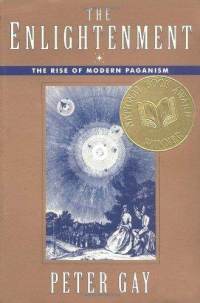The era of pagan Christianity…

How are the Middle Ages like the decades before and after the turn of the 21st century? Both are characterized by religious syncretism—the blending of different philosophical and religious beliefs and practices.
Historian Peter Gay describes the four centuries between 1300 and 1700 as “the era of pagan Christianity.” It was a time of great flux—what was certainly coming had not quite arrived. “To be sure, these centuries, for all their enormous contributions to a secular mode of thought, were still overwhelmingly religious.”
But all the resistance of Christian institutions and all the tenacious hold of religious belief did not prevent the resurgence of an old, and eventually the triumph of a new mode of thinking. These were centuries when secular forces first expanded and then exploded whatever unity the Christian millennium had possessed. It was the era of pagan Christianity.
The name—pagan Christianity—may sound like a self-conscious paradox. But it aptly describes a time when men held, more or less comfortably, beliefs that the Enlightenment would regard as wholly incompatible, when there was nothing incongruous about the sight of a Christian Humanist, a Christian Stoic, a Christian Platonist, or even a Christian skeptic. Christian thought had proved flexible and remarkably absorptive, and Lorenzo de’ Medici could say in all seriousness that one could not be either a good citizen or a good Christian without being a good Platonist. The rebellion against the Middle Ages was therefore not a rebellion against religion.
The Middle Ages was an era of accommodation—an era in which the Church pursued “social acceptability and political advantage.” These ambitions, reflecting a loss of confidence in religious ideas and institutions, paved the way for the outright rebellion against religion, which did arrive in the 18th Century with the Enlightenment. It was in this century that “western man recovered his nerve and dared set out on his own.”
The real source of trouble, hard to diagnose and almost impossible to eradicate, was a bland piety, a self-satisfied and prosperous reasonableness, the honest conviction that churches must, after all, move with the times. This—the concessions to modernity, to criticism, science, and philosophy, and to good tone—this was the treason of the clerks.**
There was much comfort and little anxiety in sermons purporting to prove that the course of a Christian life was easy, that reward for good conduct was sure and glorious, that God had commanded men nothing ‘either unsuitable to our reason or prejudicial to our interest; nay, nothing that is severe and against the grain of our nature,’ and that, on the contrary, ‘the laws of God are reasonable, that is suited to our nature and advantageous to our interest.’
The temptation to accommodate to the spirit of the age has always been a challenge for the people of God. In the next post, we will examine a contemporary example of “moving with the times.” The question now, as it must have been for some folks in the Middle Ages, is how to resist the spirit of the age. How do we make disciples who will be committed followers of Jesus Christ in a post-Christian culture?
** “Clerks” refers to the intellectuals of that era. A large number, if not most, were churchmen in some capacity.
Peter Gay’s The Enlightenment: The Rise of Modern Paganism was first published in 1966 by Alfred A. Knopf, Inc. These quotes are from Chapter Five, “The Era of Pagan Christianity.”


 July 18, 2012
July 18, 2012 







Comments are closed.